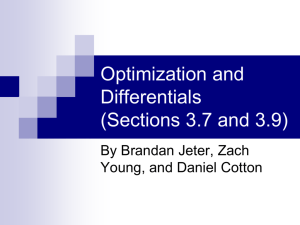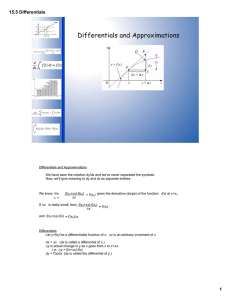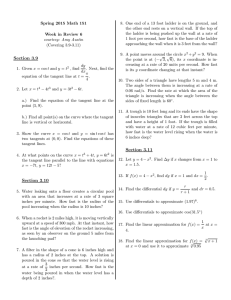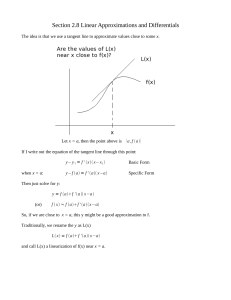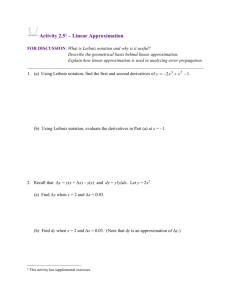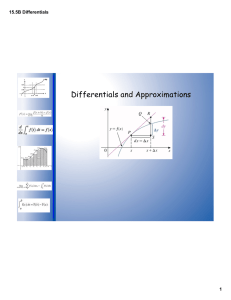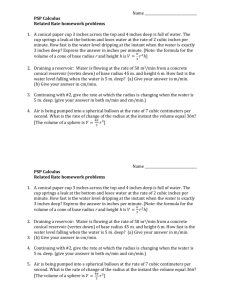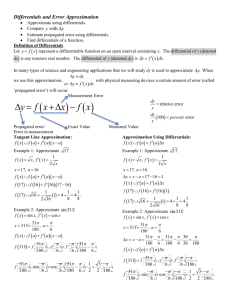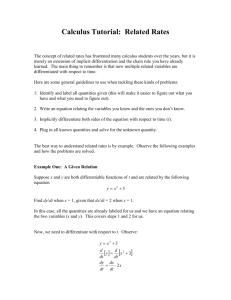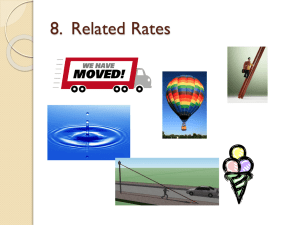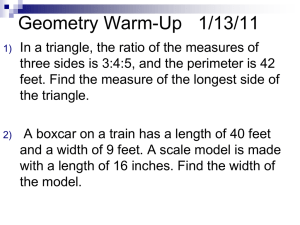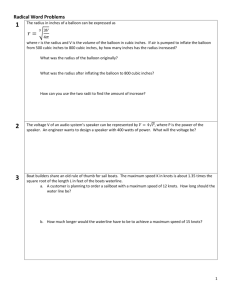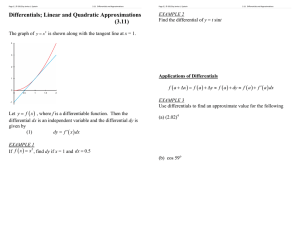Calculus Fall 2009 Lesson Plan (Percent Error)
advertisement
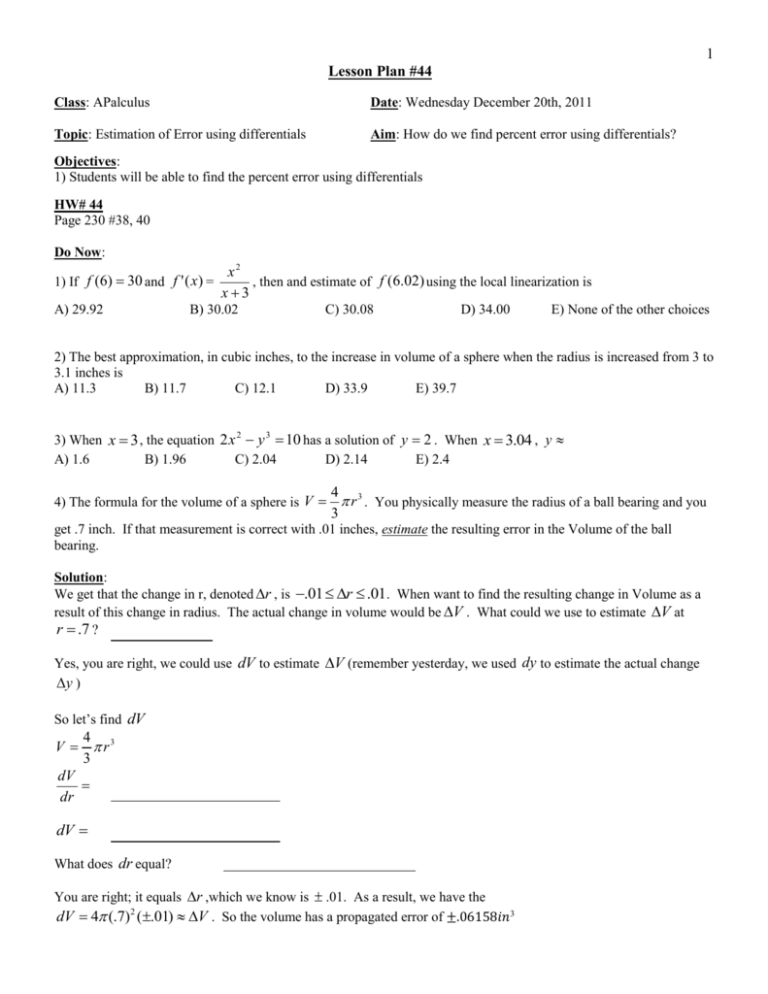
1 Lesson Plan #44 Class: APalculus Date: Wednesday December 20th, 2011 Topic: Estimation of Error using differentials Aim: How do we find percent error using differentials? Objectives: 1) Students will be able to find the percent error using differentials HW# 44 Page 230 #38, 40 Do Now: 1) If f (6) 30 and f ' ( x ) = A) 29.92 x2 , then and estimate of f (6.02) using the local linearization is x3 B) 30.02 C) 30.08 D) 34.00 E) None of the other choices 2) The best approximation, in cubic inches, to the increase in volume of a sphere when the radius is increased from 3 to 3.1 inches is A) 11.3 B) 11.7 C) 12.1 D) 33.9 E) 39.7 3) When x 3 , the equation 2 x 2 y 3 10 has a solution of y 2 . When x 3.04 , y A) 1.6 B) 1.96 C) 2.04 D) 2.14 E) 2.4 4) The formula for the volume of a sphere is V 4 3 r . You physically measure the radius of a ball bearing and you 3 get .7 inch. If that measurement is correct with .01 inches, estimate the resulting error in the Volume of the ball bearing. Solution: We get that the change in r, denoted r , is .01 r .01. When want to find the resulting change in Volume as a result of this change in radius. The actual change in volume would be V . What could we use to estimate V at r .7 ? Yes, you are right, we could use dV to estimate V (remember yesterday, we used dy to estimate the actual change y ) So let’s find dV 4 V r3 3 dV dr dV What does dr equal? You are right; it equals r ,which we know is .01. As a result, we have the dV 4 (.7)2 (.01) V . So the volume has a propagated error of ±.06158𝑖𝑛3 2 dV 4 r dr .0429 . The percent error is approximately 4.29%. 4 3 V r 3 2 The relative error is Procedure: Write the Aim and Do Now Get students working! Take attendance Give back work Go over the HW Collect HW Go over the Do Now Example #1: The measurement of the side of the square is found to be 12 inches, with a possible error of 1 inch. Use differentials 64 to approximate the possible propagated error in computing the area of the square. Exercise #1: The measurement of the edge of a cube is found to be 12 inches, with a possible error of .03 in. Use differentials to approximate the propagated error in computing the volume of the cube. Exercise #2: The measurement of the side of a square is found to be 15 centimeters with a possible error of 0.05 centimeter. Approximate the percent error in computing the area of the square. Exercise #3: The edge of a cube has a length of 10in., with a possible error of 1%. The possible error, in cubic inches, in the volume of the cube is A) 3 B) 1 C) 10 D) 30 E) None of the other choices Sample Test Questions: 1) The radius of a circle is measured to be 3cm correct to within.02cm. Estimate the propagated error in the area of the circle. A) .183 cm. B) .213cm C) .285cm D) .377 cm E) .427cm 2) Use differentials to approximate the change in 𝑦 of the curve 𝑦 = 3𝑥 2 − 6𝑥 + 1 as 𝑥 changes from 6 to 6.1. A) 3 B) 3.01 C) 3.02 D) 3.03 E) 3.04 3
